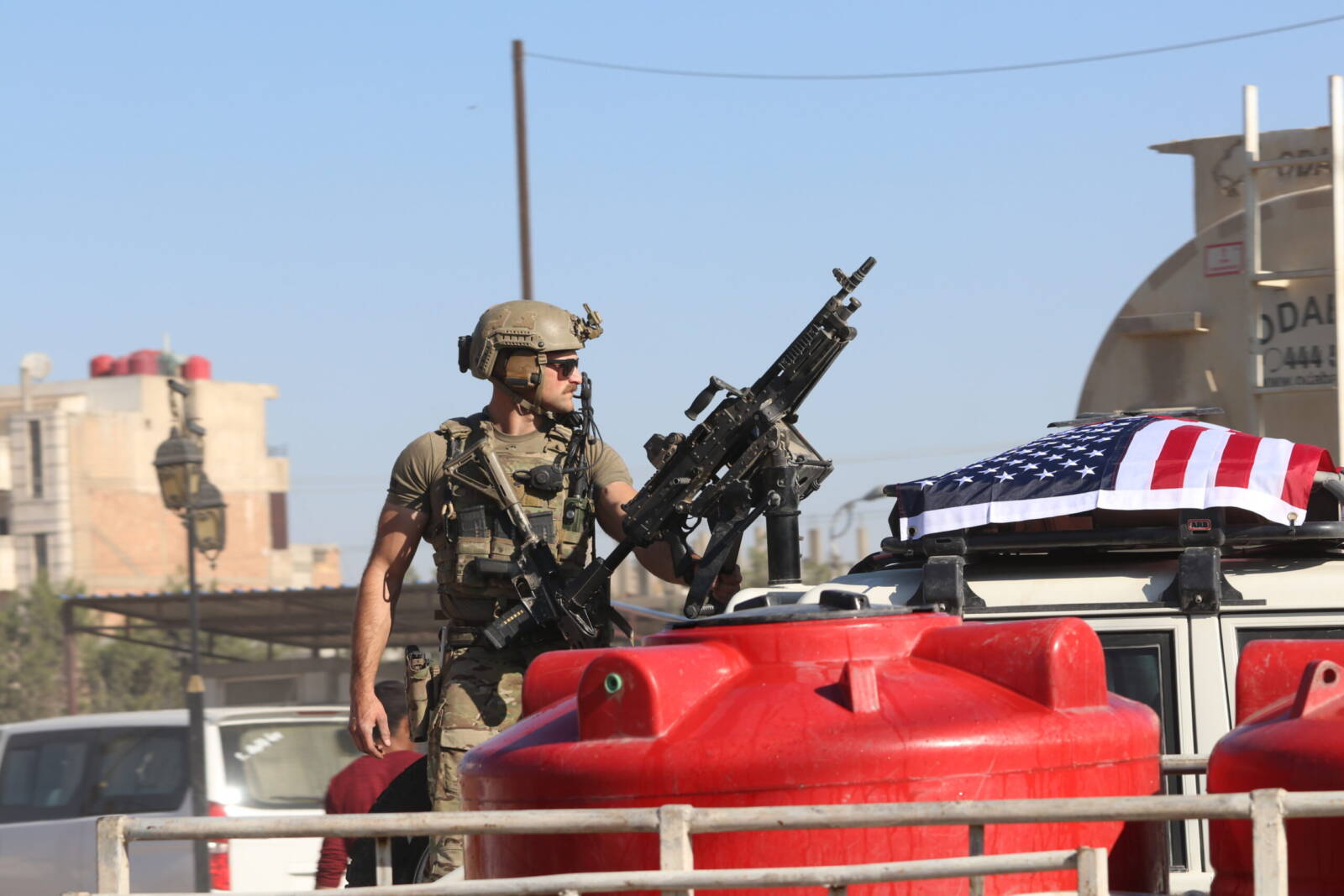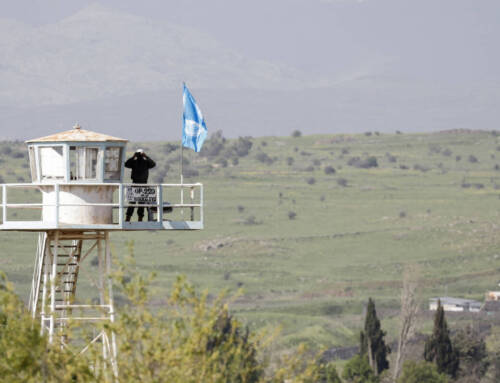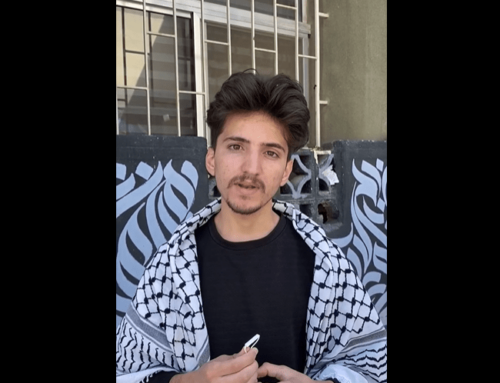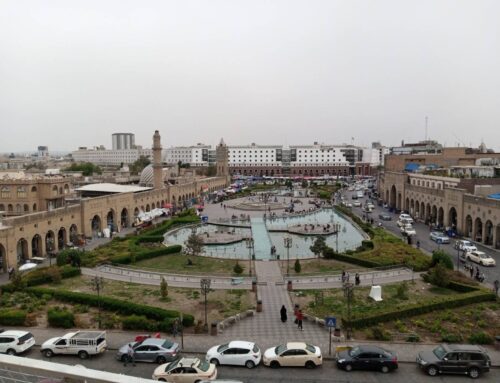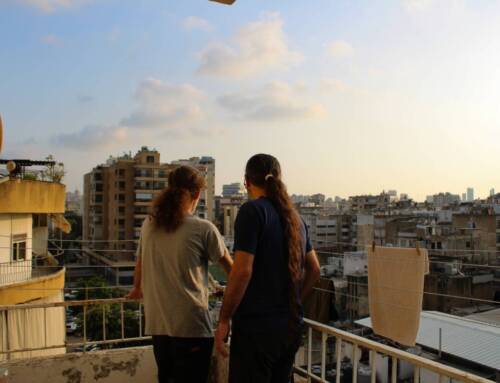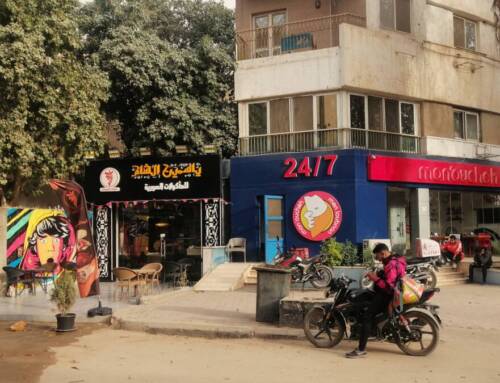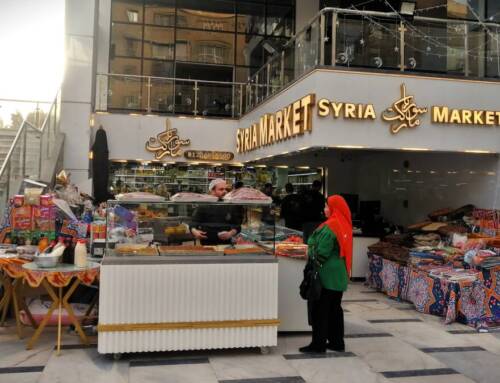Renewed talk of US withdrawal rattles Syrians in the northeast
Residents of SDF-controlled northeastern Syria say the US military presence there brings a sense of relative stability, one that any withdrawal—as Washington was recently reported to be considering—would shatter.
15 February 2024
HASAKAH — In his bustling shop in Syria’s northeastern Qamishli city this month, Maher al-Zaim stared at his phone, scrolling through recent news reports that the United States (US) is considering withdrawing from the Syrian Democratic Forces (SDF)-controlled area. “Withdrawal, for us, is suicide,” he said, setting the phone aside. “It’s as if they were throwing us into the fire and leaving.”
Al-Zaim, who is displaced from Ras al-Ain (Serekaniye), speaks from experience. In October 2019, US forces withdrew from an observation point in Tal Arqam, eight kilometers west of his native city on the Turkish border. Two days later, Turkey launched Operation Peace Spring, with the participation of opposition Syrian National Army (SNA) factions, targeting the SDF in Hasakah’s Ras al-Ayn and Raqqa’s Tal Abyad. He was forced to flee, alongside thousands of others, leaving his chain of shops behind him.
Al-Zaim fears another displacement, to parts unknown. He worries he will lose his livelihood again. He opened his shop in Qamishli in partnership with his brothers, after they were all displaced. They poured all their money into it, he told Syria Direct.
Fears of a US withdrawal from northeastern Syria were renewed in late January, after Al-Monitor and Foreign Policy reported that Washington was considering withdrawing its troops from Syria. While the White House denied reports it intends to withdraw, that has not dispelled al-Zaim’s fears. Washington “betrayed us before,” he said, and could “do it again at any moment.”
The mere idea of a US withdrawal—even talk that has not been implemented on the ground—sparks fear and panic among civilians in SDF-controlled areas, multiple sources in Hasakah told Syria Direct.
“They are waiting for an opportunity to attack the region. Withdrawal is annihilation for us, especially the Kurds.”
“The US presence creates a state of stability and security, and reduces the threat of enemies, foremost of which is the Islamic State [IS],” Ahmad Omar (a pseudonym), who works for an international organization in Hasakah city, told Syria Direct. “If there’s a withdrawal, the situation will be catastrophic.”
On February 11, as al-Zaim recounted his fears to Syria Direct at his shop in Qamishli, the sound of a loud explosion rang out in the distance. It was caused by a Turkish drone strike that targeted a building housing wounded SDF forces in the heart of Qamishli.
Al-Zaim expects any US withdrawal to result in “a major attack by Turkey, or the Syrian regime and Russia,” he said. “They are waiting for an opportunity to attack the region. Withdrawal is annihilation for us, especially the Kurds.”
Lying in wait
In October 2019, former US President Donald Trump ordered the withdrawal of all US forces from northeastern Syria, days before Turkey’s Operation Peace Spring began. Under pressure from the Pentagon, the US—the main ally of the SDF—kept 900 troops in the area.
Pulling out the remaining US forces would clear the way for Turkey, which has been targeting northeastern Syria with airstrikes and drones for several months, destroying many service centers and killing and injuring civilians.
Ankara is open about its desire to launch a ground operation against the SDF along its southern border. “A US withdrawal would allow it to make good on its threats. It would be tantamount to abandoning the Kurds,” journalist and researcher Abdul Halim Suleiman, who is from Ras al-Ain, said.
A withdrawal, should it happen, would also be in the interest of the Syrian regime and its ally, Iran, Suleiman said. The two have been lying in wait, and have made attempts to increase their influence in the region through “militias they support,” he added. “The US withdrawal would allow Iran to fill the void.”
There is a third danger: IS. Support from the US-led international coalition was necessary for SDF forces to eliminate its territorial control in Syria. But while the organization’s defeat was declared in March 2019, it still exists, and “is looking for any defect, vacuum or space to restore its activity and cells in the region,” Suleiman said. IS “is still conducting operations against those who work in [Autonomous Administration] AANES institutions, the Internal Security Forces [ISD] and SDF in northeastern Syria.”
“With a withdrawal, this balance will be shaken, and the map of control and influence will change.”
In the past two years, Syria’s northeast has witnessed events in which Suleiman sees “a real indication” of IS cells’ activity. Notably, IS launched a major attack on the al-Sinaa prison in Hasakah city in January 2022. It also continues to carry out operations inside the SDF-run al-Hol detention camp, where thousands of IS family members are being held, spreading extremist ideology. “It can pick itself up again, given the presence of its cells in the Syrian Badia [eastern desert], and the areas occupied by Turkey—especially in Serekaniye, Tal Abyad and the surrounding countryside,” he added.
Writing in the US magazine Foreign Policy last month, Charles Lister warned of the dangers of withdrawing, calling it “a gift to the Islamic State” with a catastrophic impact on “the unresolved and acutely volatile crisis in Syria.”
Journalist Suleiman said northeastern Syria is experiencing a state of equilibrium due to the presence of US and coalition forces. “With a withdrawal, this balance will be shaken, and the map of control and influence will change,” he said. “The region will enter into various scenarios we don’t know the outcome of.”
In an official statement this month, SDF commander-in-chief Mazloum Abdi said his forces had contacted the US State Department and the White House, who denied reports of a withdrawal from anti-IS operations. However, “a future withdrawal is a possibility,” he said, noting that “working to prevent a withdrawal of the US army is one of our priorities.”
Abdi warned that any withdrawal would have “very serious repercussions,” and that “conditions are not suitable” at present.
‘Abandoned us’
Standing outside a real estate office in Hasakah city, Muhammad al-Jassim, 60, conversed with his neighbor, Ibrahim al-Jassim, 65. “Erdoğan doesn’t stop bombing our area, so what will happen if the US withdraws,” Muhammad wondered, before answering his own question. “It will be a dangerous situation.”
Both men expressed fears that the US could make a surprise decision to withdraw. Washington should “reconsider its calculations regarding our region, and not pull out of northeastern Syria before a political solution is achieved,” Ibrahim told Syria Direct.
While the US presence in northeastern Syria is seen as a stabilizing factor—especially for the SDF and its civil wing, the AANES—the threat of an abrupt exit also plays a role in creating chaos and putting pressure on civilians, given repeated talk of withdrawal.
In February 2023, US Republican Congressman Matt Gaetz submitted a draft resolution in the House of Representatives to order President Joe Biden to pull his forces out of Syria. Washington’s former ambassador to Syria, Robert Ford, supported the demand in a letter he addressed to the US Congress. One month later, the House of Representatives voted down the resolution.
Mere talk of a US withdrawal affects markets in northeastern Syria, al-Zaim said at his shop in Qamishli. Sales in some sectors could drop by more than 50 percent, he said, and in the event of a “serious withdrawal,” he expected traders to stop buying goods “for fear of them spoiling or being lost if we are displaced from the region,” he said.
Subhiya Ahmad Salman, 50, has lived in Hasakah city since she was displaced from her Ras al-Ain countryside village of Daoudiya Mulla Salman in late 2019. When Syria Direct spoke with her, she had not heard the most recent talk of Washington’s intent to withdraw from the northeast. Still, she felt that “the US has abandoned us, and left us living with constant anxiety,” adding “they should return us to our homes, not withdraw.”
“The AANES and the SDF alone are not able to protect the region, so any American withdrawal without official political recognition of them means their end.”
Civilians’ fears surrounding a US withdrawal are “logical,” Ishaq Bozi, the executive director of the Kobani for Relief and Development organization, said. “The AANES and the SDF alone are not able to protect the region, so any American withdrawal without official political recognition of them means their end.”
“Despite the strength the SDF has, and the sacrifices it has made to fight terrorism and build an autonomous administration that represents the region’s people, it cannot confront Turkey, which is the second-largest force in NATO,” Bozi added.
Implications for civil society
International nonprofits and local civil society organizations work to meet humanitarian needs in northeastern Syria, repairing infrastructure and supporting the health and education sectors in lieu of the AANES.
The US presence in northeastern Syria is a safety factor for these organizations—especially international organizations—and their employees, according to Ali al-Alis, the executive director of Asfir, a local organization in Raqqa, and a board member of the Coalition of Civil Society Organizations in North and East Syria (CSO-NES). “The reverberation of a withdrawal would affect the work of organizations in the area,” he said.
Humanitarian organizations may face “difficulty in determining their future strategies and plans, due to the lack of foreign policy clarity regarding support and intervention in the region,” al-Alis said. A potential withdrawal could also “lead to changes in the financial support and resources available to local organizations, which will face new challenges in funding their programs and projects as a result,” he added.
“Most international organizations and donors turn to the safest and most stable areas to work or support local organizations, and since most organizations working in the region have gone past the stage of emergency response and begun the stage of stability and sustainability, any statement about a withdrawal will impact them,” Bozi said. His own organization, Kobani for Relief and Development, “was greatly affected by the statements, because the nature of our projects requires stability and sustainability, as they are development projects,” he added.
A US withdrawal would not only affect those humanitarian and service projects that Washington funds, al-Alis explained. It would also impact “international and regional partnerships, and could make it difficult to access necessary resources, stopping humanitarian programs in our region,” he said. “A loss of confidence in the US presence leads to a decline in donors’ financial support for new projects.”
Even if talk of a US withdrawal is, as Washington insists, “mere rumors,” the frequent circulation of news about that possibility “leads to uncertainty about the future, making it difficult to plan new and sustainable projects,” al-Alis said.
In 2019, most international organizations pulled out of Kobani (Ain al-Arab), in northern Aleppo province, after US troops withdrew from it. Most local organizations stopped working as a result. Residents lost many services, while dozens of employees of those organizations lost their jobs.
“It is very possible that international organizations would withdraw from the region, and this would create a living crisis for us, worsening our situation.”
Alongside his fears of a US withdrawal’s impact on the region and its security, Ahmad Omar, 49, worries about his job with an international organization in Hasakah. “It is very possible that international organizations would withdraw from the region, and this would create a living crisis for us, worsening our situation,” he told Syria Direct.
Organizations interrupting their work would not only worsen their workers’ living situation, Omar, who supports a family of four, said. It would also “worsen the situation of displaced people in the camps, who receive aid from the organizations.”
From a security perspective, a US withdrawal would lead to “a deterioration of the local security situation, meaning that organizations will provide their services in a less stable environment,” al-Alis said. Insecurity includes “us being personally targeted as individuals, since most workers in the organizations are activists and opponents of the Assad regime,” he added. “Russian-Turkish rapprochement is another challenge facing civil society, which also carries a threat to our lives.”
Additionally, “there are risks of the return of extremist organizations, especially since we are observing noticeable activity in this period,” al-Alis said. Organizations and their employees could be targeted, “since most of them are working to counter extremist thought and raise awareness of its dangers,” he said.
Omar believes “the presence of the US, if only a single soldier, is a factor of stability, positively affecting our lives and the regional political situation.”
In the chaos and confusion caused by the latest talk of a US withdrawal, al-Zaim simply hopes “that the US will not make a decision that would drag the region into dire horrors—that it will not abandon us again, as it did before.”
This report was originally published in Arabic and translated into English by Mateo Nelson.

